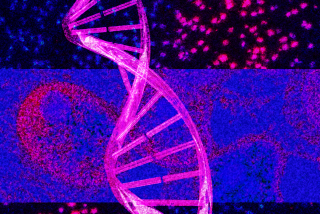Virginia finds DNA database of felons is far from complete
- Share via
WASHINGTON — Virginia authorities have launched a substantial review of the state’s DNA database after discovering that thousands of felons may have skirted a legal requirement to submit genetic samples, partly because local and state agencies may have failed to make them do so.
Public safety and crime lab officials estimate that at least 20% of felons’ DNA profiles could be missing from the database, a flaw that could hamper criminal investigations across the state and nation.
Investigators routinely take crime scene evidence and run it through Virginia’s database and others, looking for DNA matches.
Long considered a national leader in DNA crime technology, Virginia has logged about 3,600 “cold hits” from its database -- matching biological evidence from a crime scene to an offender’s DNA profile. Scores of violent crimes, including some homicides, have been solved that way. Virginia’s database, like that of other states, forms part of a larger national DNA network.
“The good news is it appears that we have well over 80% of convicted felons in the database, but obviously we need to have 100% of them in the database,” said Clyde Cristman, deputy secretary of the Virginia Department of Public Safety.
Virginia law requires all convicted felons and those arrested in connection with violent crimes such as rape or homicide to submit cheek swabs for DNA analysis and entry into the statewide database. Currently, there are more than 253,000 samples in the database, according to the Department of Forensic Science website.
The Public Safety Department is working with the departments of Corrections, Forensic Science and Juvenile Justice to determine how many offenders’ profiles are missing and why. The multi-agency review will begin with a check of about 54,000 people on probation or parole to verify that their samples have been processed.
Cristman said that so far about 12,000 cases have been examined. He could not say how many of those offenders’ samples were missing from the data bank but said the number already is in the thousands. It could take about two months to complete the review and update the data.
More to Read
Sign up for Essential California
The most important California stories and recommendations in your inbox every morning.
You may occasionally receive promotional content from the Los Angeles Times.













